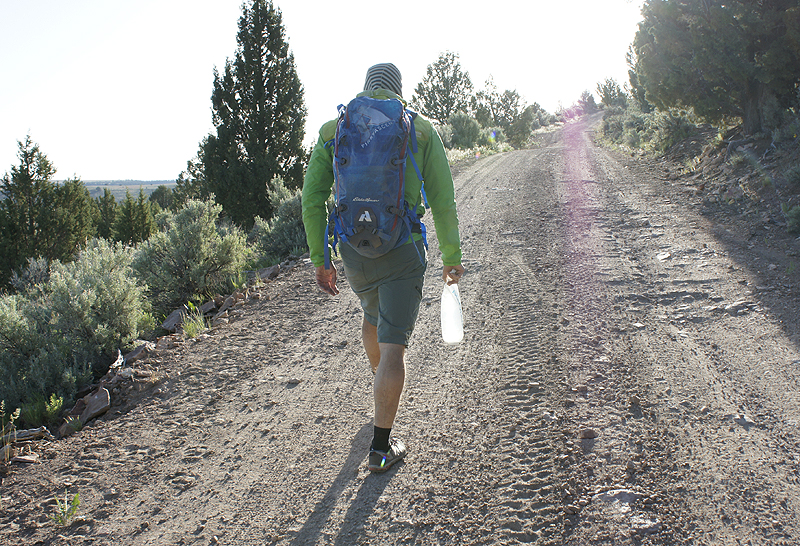
Sometimes getting to the mountain requires a week’s worth of supplies and a big pack to carry it all. But a summit bid has a bias for lean and mean, leaving all things slow and heavy down at camp.
This juxtaposition wasn’t lost on Eddie Bauer, who responded a few years ago with its chameleon-like Alchemist, a 40-liter pack that converts to a 55-liter hauler.
This year EB pulled out all the stoppers to bring us its guides’ dream pack, the First Ascent Sorcerer. Like the Alchemist, it’s a 40L pack that expands to 55L. But this is a different beast of burden — a pound lighter than its predecessor and with a racy chassis and space-age materials.
How did they do it? The devil is in the details, and there’s a lot of them. Here’s a peek at this brand new bag of tricks. —Steve Graepel
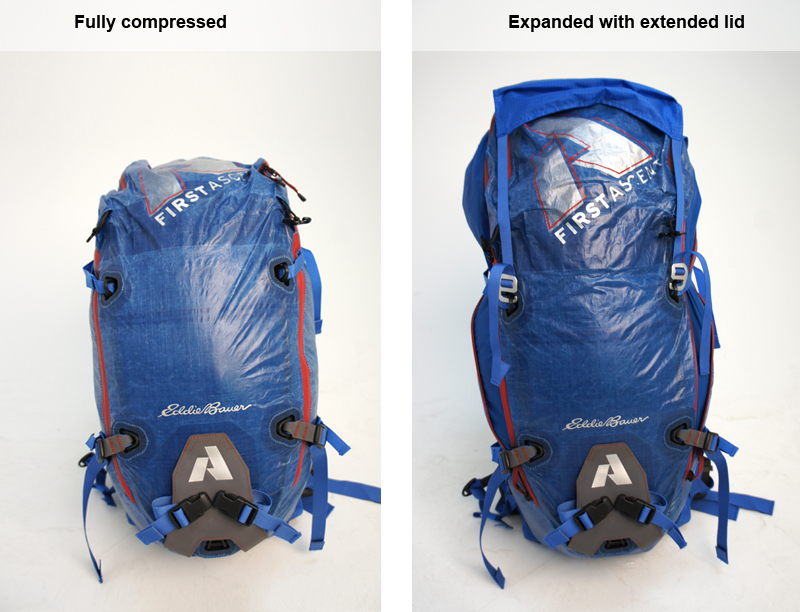
The Gear: Eddie Bauer/First Ascent Sorcerer pack
Price: $499
Available: Now
Where To Test It: The slopes of Rainier or other big peaks
Who’s It For: Non-technical mountaineers

Boring But Important: Volume. 40L-55L. Made of CTF3; non-woven cuben fiber (with nylon bellows). Sewn and welded construction. Avg. Weight: 3lbs, 6oz (with back pad); 2lbs, 10oz (with back pad removed).
Materials: The CTF3 (or Cuben fiber) is what drives this alpine pack’s price into the jet stream. At a molecular level, polyethylene fibers are ultra long, spreading a load between molecule chains over very long lengths. These fibers are laid out in multiple directions, further increasing its strength, and then sandwiched with polyester films.
The result? It’s four times stronger than Kevlar and 15 times more resistant to abrasion than steel, EB cites. This makes cuben a material of choice for climbing slings/runners, sail cloth, and other high-end backpacks.
Like other top-shelf materials, it’s not easy to work with. Its susceptible to fingerprints during manufacturing and requires special welding technology (essentially a clean room) for production.

Chassis: The team revisited the pack’s design, starting with the hip and shoulder harness. They removed pockets from the hip belt and anatomically curved the shoulder straps to fit around the shoulders. Both the belt, shoulder and back panel have an aerated foam core sandwiched between the outer material. This allows the body to breath while comfortably wrapping the body.
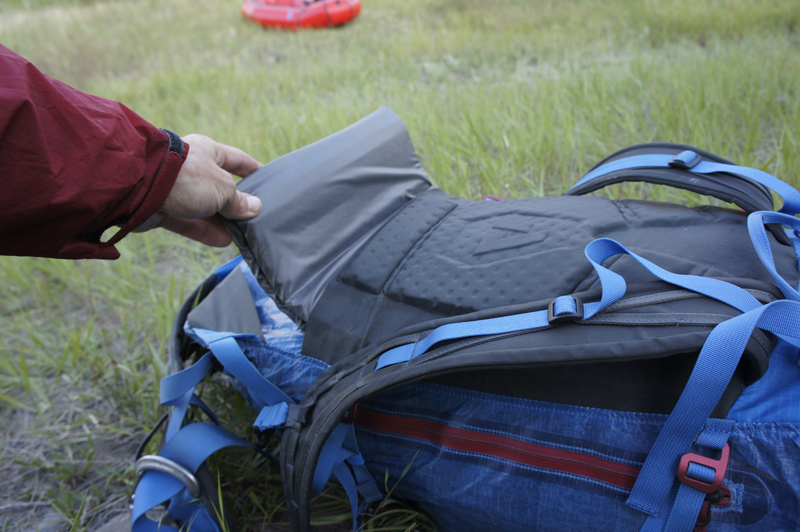
The foam back panel is laminated to the body of the pack and has thermo molded patterns to disperse heat.
An anatomically curved (and removable) hip belt flares out over the iliac crests, hugging to the hips nicely for support. Each side has a gear loop to sling a rack. A nice perk, they left a loop in the webbing for a ‘biner on either side to rack your ice screws.
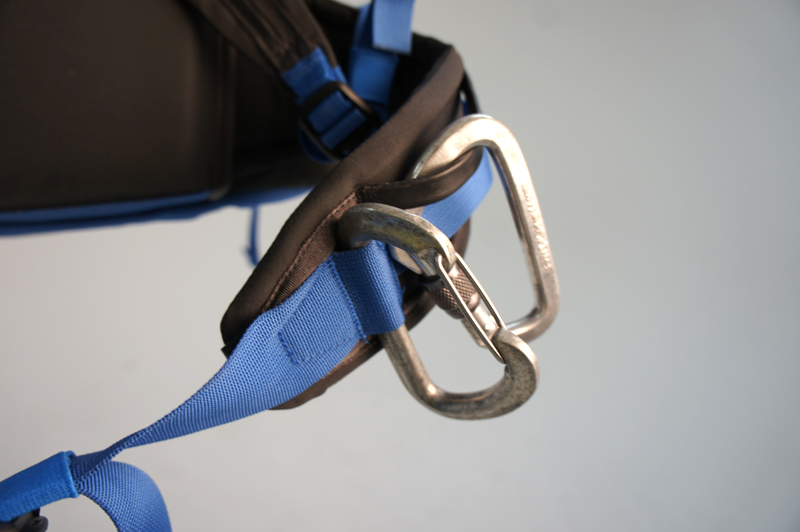
Frame: The hard frame is a singular ¾” aluminum stay running down the middle of the pack.
In addition to the stay, EB incorporated a soft frame it called the BFF (bivy/frame/first aid) It’s a ¼’‘ removable foam back pad “frame sheet” that can be used as a bivy pad, bone splint, or a sit pad. It’s accessed externally, just above the hip belt, so you can quickly remove it even from a full pack.
The pad unfolds to 21” x 36” — the largest I’ve ever seen in the market from a pack, making it actually comfortable insulation for sleeping on. I used the pad under my legs in the Owhyees on a recent trip.
A posterior delrin rod swoops in a U-shape to “frame” the back panel, providing a stable anchor for the four compression straps and two pair of D-rings (for additional straps if you desire). This stabilizes a compressed load tight to the back, which is a bonus when climbing.
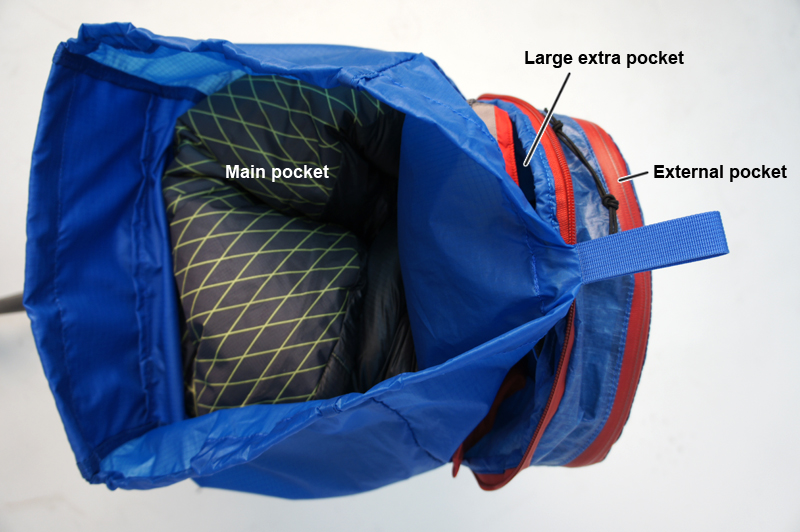
Volume: The Sorcerer touts three-packs-in-one, though I found it to be more fluid than this. Fully compressed and zipped up, it holds 40 liters of gear. Unzip the top and you get about 45 liters of capacity. Extend the spindrift collar and unfurl the foldaway lid and the pack expands to around 50 liters. Or, fully unzip the two rainbow zippers and the gills expand to its full 55 liters of gear-hauling glory.
Eddie Bauer is hardly the first to offer expandable volumes. Wild Things did it with its Andinista (50-90L) years ago. Cilogear solved it with its Worksack 45 (22-75L). Both have offered cuben fiber versions (also at a higher price)
Straps: The shoulder straps have adjustable load lifters that can be moved up the extended pack, distributing unwieldy volumes over your body as the load increases. Both shoulder straps have 5 distinct tabs to lock the chest strap position, ensuring a no-slip fit. The four side compression straps (two on either side) posterior delrin rod running through the face of the pack and clip to the pack via red anodized aluminum hooks.
An additional top strap compresses top loads and hooks behind the head and could easily keep a rope.

Pockets/Access: The top lid has a large pocket—large enough to swallow a liter bottle. When the pack is fully extended, a fold-away lid also has a gusseted zipper pocket large enough to hold a map or some food.
Inside, the pack is divided into three compartments: a bladder sleeve, the large main compartment, and a tall vertical pocket that runs immediately behind the front panel. This last compartment is a nice perk. You can store your wet, manky gear, trash or tall items. I used it to stow my paddles on a recent bike/pack-raft trip.
A 14” vertical zipper runs down the left side, providing quick access on the go. I’m usually not a fan of these — it’s a weakness in a pack’s defense. But I used it and was happy I had it.
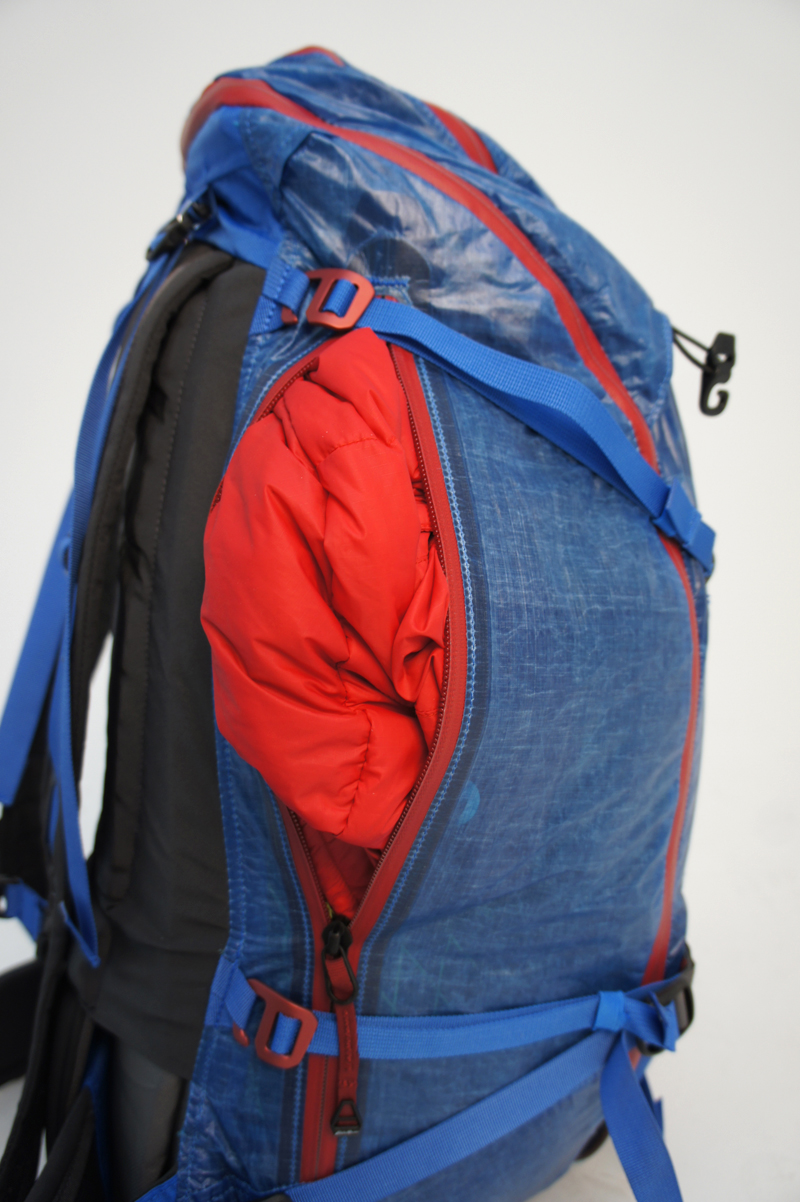
A hydration port exits the left side of the pack and was just big enough to fit a large-mouthed bite valve.
A notable change from the Alchemist, this new model no longer has hip-belt pockets. This is a good thing for climbers who need a sleek design, but some people will miss them for easy access to energy food or other stashed items.
Extras: A quick-release tool carrier sits at the bottom of the pack’s face. Two simple bungee cords hook your tools to the pack up top.
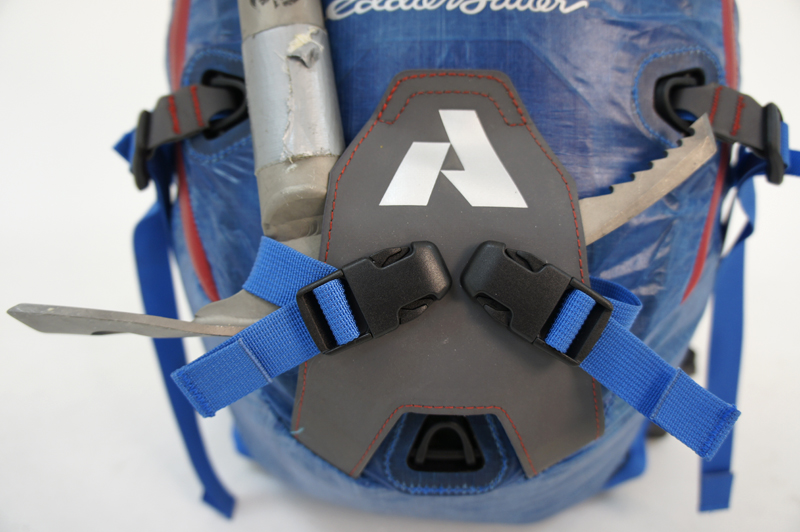
Made In: Taiwan
Killer! The materials are indeed weather repelling. It’s not an all-out drybag, but it’s significantly weather resistant and will shun a heavy storm or splashing.
The profile hugs close to the body, with its fatter width and a slimmer depth. This keeps the center of gravity close to the body—a good thing when turning acrobatic tricks in dihedrals on a climb.
Plastic buckles, standard on most all packs, can break, rendering them useless. I was happy to see someone finally bring aluminum hooks to pack straps as found on the Sorcerer.
The ice tool carriers are very functional, perhaps the best on the market. You can remove your tool without removing the pack.
I appreciated the extra internal pocket. It swallowed my pack-raft paddles and was easy access for my maps.
Finally, someone put a removable framesheet out there that is a fully functional bivy pad. Love it!
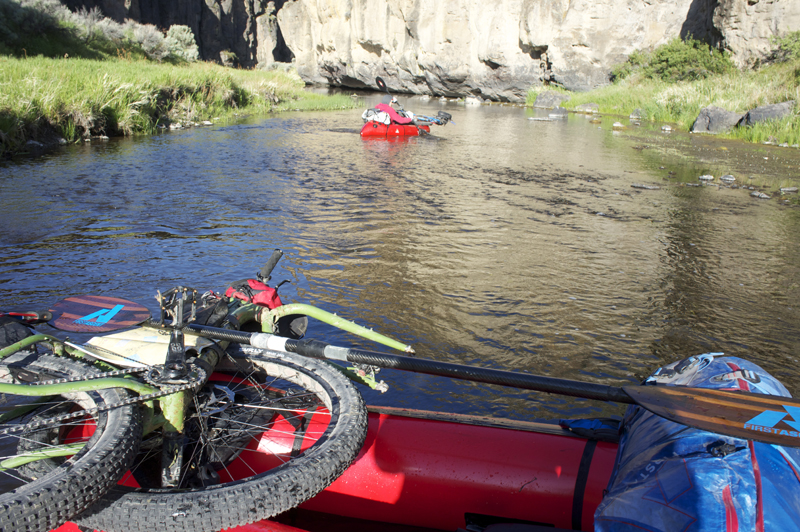
Flaws: The design is an attempt to streamline three packs into one, offering up a quiver of one. This solution is usually found in packs that offer double the volume, giving you full approach volumes and a streamlined attack pack. The Sorcerer’s spread is a shy 15 L and the result is fidgety with straps, zippers, and tucked-away lids.
You typically buy a Cuben fiber pack for durability and weight savings. At 3 lbs., 6 oz., the Sorcerer feels noticeably heavy.
The gills are made of lightweight nylon to save weight (and cost). It’s almost at the opposite spectrum of cuben fiber’s resilience. I tested the pack on a bike/pack-raft trip in the Owyhees, covering over 100 miles so rough that it pulverized my electrolyte tabs from all the bouncing. The pack endured hours of repetitive stress but small holes wore through these lighter weight nylon panels.
I did like that the pack could be stripped down for a summit bid (remove the pad and the hip belt, and the pack drops into the 2.5 lb. range). But after I undid a shoulder strap from its cinch buckle, I couldn’t slip the sewn-over strap end back in. I eventually cut the bulky strap end off to get it to fit.
Last, I’m leery of loaded zippers in the wild. Blow one and you could be hosed. Fortunately, the Sorcerer is intelligently designed with backup support through its rock-solid compression straps.
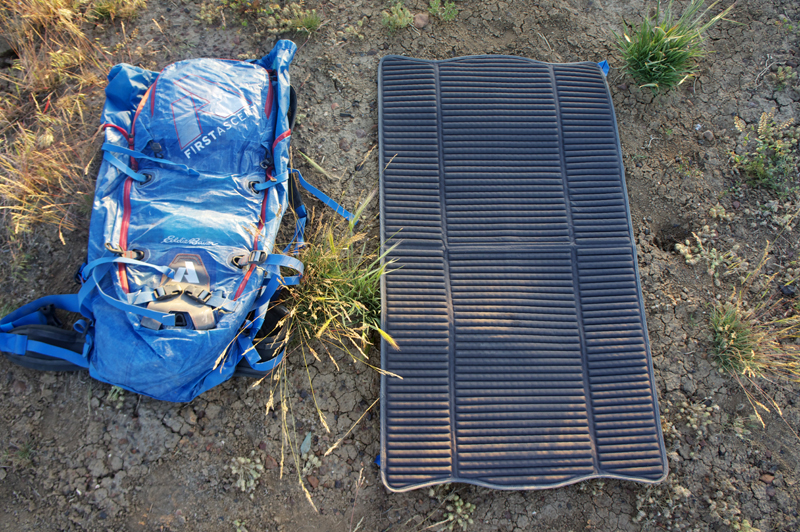
First Impressions: I’ve been using a cuben fiber pack almost exclusively since 2011. The material is fantastically durable, significantly waterproof, and pays dividends in pack weight…usually. Eddie Bauer’s Sorcerer is designed for guides who abuse equipment 200+ days a year, often shuttling heavy team loads or a client’s overflow. This is reflected in what seems to be an unusually heavy pack for its capacity. While the pack may last a few seasons for hard working guides, it should last weekend warriors a lifetime.
Who Should Buy It: Mountain guides. Or your pathologist friends with champagne taste for gear on a … well … champagne budget.
Contact Brand/More Beta: Eddie Bauer
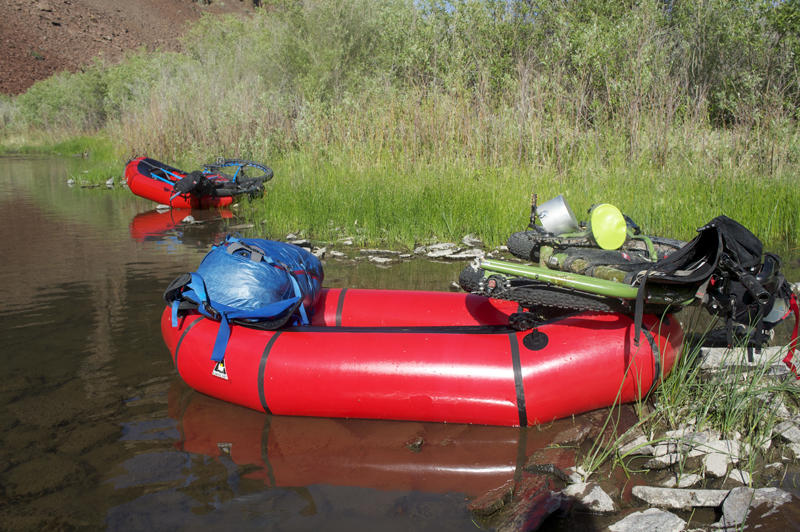
—Steve Graepel is a contributor. Our “First Look” column highlights new gear arrivals at GearJunkie.com. Photos © Monopoint Media LLC
